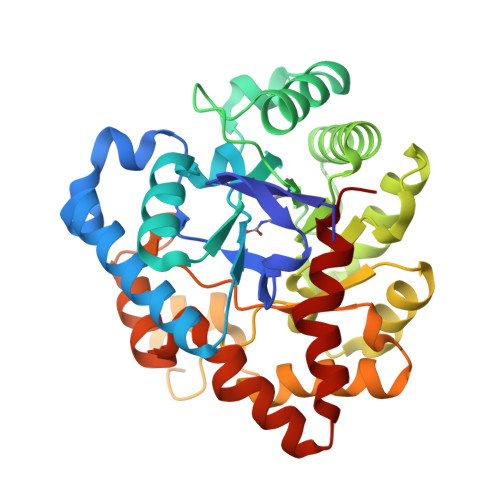The organophosphate-degrading enzyme from Agrobacterium radiobacter displays mechanistic flexibility for catalysis.
Ely, F., Hadler, K.S., Gahan, L.R., Guddat, L.W., Ollis, D.L., Schenk, G.(2010) Biochem J 432: 565-573
- PubMed: 20868365
- DOI: https://doi.org/10.1042/BJ20101054
- Primary Citation of Related Structures:
3OOD, 3OQE - PubMed Abstract:
The OP (organophosphate)-degrading enzyme from Agrobacterium radiobacter (OpdA) is a binuclear metallohydrolase able to degrade highly toxic OP pesticides and nerve agents into less or non-toxic compounds. In the present study, the effect of metal ion substitutions and site-directed mutations on the catalytic properties of OpdA are investigated. The study shows the importance of both the metal ion composition and a hydrogen-bond network that connects the metal ion centre with the substrate-binding pocket using residues Arg254 and Tyr257 in the mechanism and substrate specificity of this enzyme. For the Co(II) derivative of OpdA two protonation equilibria (pKa1 ~5; pKa2 ~10) have been identified as relevant for catalysis, and a terminal hydroxide acts as the likely hydrolysis-initiating nucleophile. In contrast, the Zn(II) and Cd(II) derivatives only have one relevant protonation equilibrium (pKa ~4-5), and the μOH is the proposed nucleophile. The observed mechanistic flexibility may reconcile contrasting reaction models that have been published previously and may be beneficial for the rapid adaptation of OP-degrading enzymes to changing environmental pressures.
Organizational Affiliation:
School of Chemistry and Molecular Biosciences, The University of Queensland, St Lucia, QLD 4072, Australia.

















